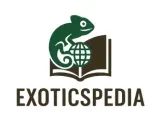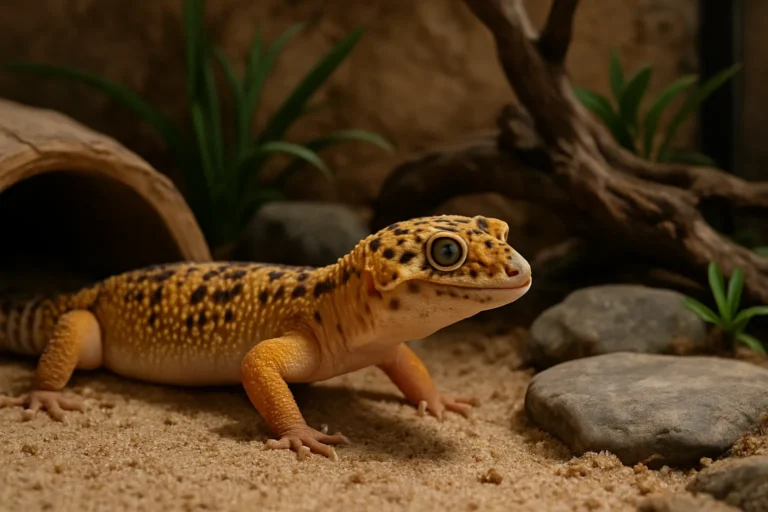Fascinating Facts About Red-Eyed Crocodile Skinks
Red-eyed crocodile skinks are among the most intriguing and visually striking reptiles in the exotic pet world. With their dragon-like armor and vivid red eyes, they capture the imagination of reptile lovers and herpetologists alike. Native to the dense tropical forests of Southeast Asia, these skinks are relatively new to the pet trade but have quickly gained popularity. In this article, we’ll dive deep into the most interesting and lesser-known facts about red-eyed crocodile skinks—from their behavior and habitat to care requirements and more.
1. Scientific Name and Classification
The red-eyed crocodile skink’s scientific name is Tribolonotus gracilis. It belongs to the family Scincidae, which includes over 1,500 species of skinks. The word gracilis is Latin for “slender” or “delicate,” describing their body structure, though their appearance is anything but delicate.
2. Origin and Natural Habitat
These skinks are native to New Guinea and surrounding islands like the Admiralty Islands. They thrive in humid, tropical environments—usually the leaf-littered forest floor, tree crevices, and near freshwater sources. Their natural habitat is full of dense vegetation, fallen logs, and mossy patches, where they hide from predators and hunt insects.
3. Striking Appearance and Armor-Like Scales
Their appearance is one of their most captivating features:
- Bright red or orange rings around their eyes (which gives them their name)
- Dark, almost black or brown body with crocodile-like dorsal scales
- A body length of 7 to 10 inches (18–25 cm) when fully grown
- Juveniles initially lack the red eye rings and have blue-tinted eyes, which change with age
The dorsal scales resemble armor plates, adding to their prehistoric, dragon-like aesthetic.
4. Secretive and Shy Behavior
Red-eyed crocodile skinks are naturally shy and secretive, spending most of their time hiding. They are crepuscular, meaning they’re most active during dawn and dusk. This makes them elusive and difficult to spot during the day. Despite their fierce appearance, they are very timid and easily stressed.
5. Unique Defense Mechanisms
When threatened, these skinks:
- Freeze or play dead to avoid predators (thanatosis)
- Make chirping or squeaking noises, especially when guarding eggs
- Puff up their bodies to look larger and more intimidating
These behaviors are relatively rare among reptiles and add to the species’ uniqueness.
6. Not Beginner-Friendly
Although small and fascinating, red-eyed crocodile skinks are considered intermediate to advanced level pets due to their specific care needs. Their shy nature and strict environmental requirements make them less suited for beginners.
7. Solitary Lifestyle and Territorial Nature
These skinks are solitary and prefer to live alone. Housing two males together can result in aggressive behavior and territorial fights. The only acceptable pairing is typically one male and one female, and even then, only if breeding is intended.
8. Handling Can Be Stressful
Unlike more interactive reptiles, red-eyed crocodile skinks:
- Do not enjoy handling
- Can become severely stressed when held
- May try to flee, freeze, or exhibit defensive behavior
Because of this, they are better suited as display pets rather than companion reptiles.
9. Interesting Reproduction Habits
Females of this species:
- Lay one egg at a time
- Are unusually protective mothers—guarding the egg with their bodies
- Can become aggressive during nesting, chirping or biting when approached
This level of maternal care is uncommon in reptiles and is a unique trait of the species.
10. Lifespan and Longevity
In captivity, red-eyed crocodile skinks can live between 7 to 10 years, with proper care and environment. Some have even been known to live slightly longer with exceptional husbandry.
11. They’re Semi-Aquatic and Can Swim
Though primarily terrestrial, these skinks:
- Can swim well when needed
- Appreciate a large water feature like a pool or stream in their enclosures
- Often live close to water in the wild, using it for hydration and escape
12. Humidity and Temperature Are Critical
To thrive in captivity, they require:
- Humidity levels between 70–90%
- A temperature gradient from 72–82°F (22–28°C) during the day, with a basking spot up to 86°F (30°C)
- A natural drop to 68–70°F (20–21°C) at night
- UVB lighting (1–2 UVI range), such as Arcadia ShadeDweller or T5 6%
13. Diet and Feeding Habits
Red-eyed crocodile skinks are strictly insectivorous. Their diet includes:
- Crickets
- Earthworms
- Roaches
- Locusts
- Waxworms
- Calci worms
- Mealworms and superworms (in moderation)
They should be fed 3–4 times per week, and food should be dust-supplemented with calcium and vitamins for proper bone development.
🦎 Feeding Chart:
| Age | Frequency | Supplements |
| Juvenile | Daily | Calcium w/ D3 (daily), multivitamin (weekly) |
| Adult | Every other day | Calcium w/ D3 (every other feeding), multivitamin (weekly) |
14. Health Issues to Watch For
Common health concerns include:
- Metabolic Bone Disease (MBD): Caused by calcium/vitamin D deficiency
- Respiratory Infections: Due to low temperatures or high humidity
- Parasites or GI Issues: From unclean enclosures or poor diet
Always consult a reptile-savvy vet for any signs of lethargy, weight loss, or abnormal behavior.
15. They’re Still Rare in the Pet Trade
While their popularity has grown, red-eyed crocodile skinks remain relatively rare and exotic in the pet trade. Most individuals found today are captive-bred, which helps preserve wild populations.
Final Thoughts
Red-eyed crocodile skinks are truly one-of-a-kind reptiles. From their prehistoric looks and secretive behavior to their fascinating defense tactics and maternal instincts, they make for an exciting pet—especially for those who enjoy watching more than handling. While not ideal for beginners, they’re incredibly rewarding for experienced keepers who can replicate their natural environment and understand their unique quirks.






